Brazilian Tanks & AFVs
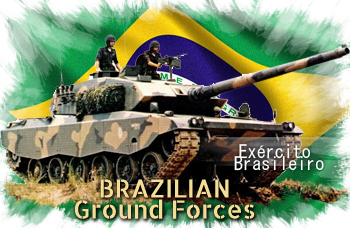 About 3,000 armored vehicles, 1925-2021
About 3,000 armored vehicles, 1925-2021
- Bernardini X1A
- Osorio EE T1
- Charrua XMP-1 APC
- EE-T4 Ogum Reco APC (1986)
- EE-11 Urutu
- EE-3 Jararaca
- EE-9 Cascavel
- VBTP-MR Guarani IFV
- Avibras Astros II SPRL
- Avibrás GUARÁ
- VBL (inbrafiltro)
- AV-VU4 AM
- AV-VBL
- EE-17 Sucuri
Roots of the Brazilian Army
It could be said that the composite forces formed of local mercenaries and Portuguese fighting the Dutch and French in the beginning of the 17th century were an ancestor of the future Brazilian Army. All along the 19th century, the Brazilian forces changed in composition and organization but were largely forged by wars: The Independence war which lasted until 1825, the Equator Confederation (1824) war, Cisplatine War (1825–1828), Malê Islamic uprising (1835), Cabanagem, Sabinada, Balaiada and Praieira Revolts (1835–1849), the Ragamuffin War (1835–1845), the Platine (1851–1852), Uruguayan (1864–1865), and Paraguayan Wars (1864–1870), the Naval Revolt (1893–1894), the Federalist War (1893–1895) and the War of Canudos (1896–1897), the Acre Revolution (1899–1903) and the Contestado War (1912–1916).
The battle of Caseiros, part of the Platine War (1852).
The XIXth century saw the army divided into two branches, the 1st line infantry (regular) and the 2nd line militias and orderlies. Under Emperor Pedro I in the 1820s, the regular army numbered 24,000 as well equipped and trained as any European Army. Cadets and future officers were trained at the Academia Militar de Agulhas Negras which was also an engineering school.
Many rebellions took place in the local provinces, making the deficiencies of the army clear and leading to its reform in 1845. In particular, the old Military College was widened and doubled. The emphasis was put on a better training for officers. By 1857, on the eve of the Platine War against Argentina, the Brazilian army was 37,000 strong and proved itself by winning the war. However deficiencies were put in light during the Uruguayan and Paraguayan wars. The National Guard was neglected, whereas the regular Army was enhanced with the addition of the Fatherland Volunteer Corps in 1865. Tactics and equipments were modelled after the Prussian Army, and it proved itself during the very long Paraguayan war inside the triple alliance.
Brazil in WWI
Although there was a guerilla war taking place on its soil, the Contestado war, Brazil declared war on the Central Powers shortly after the USA. Brazil sent three small military groups to France. After some training, they were attached to the French Army and took part in some engagements in 1918. It was nevertheless a valuable experience for the Brazilian Expeditionary Force, as it had the first contact with tanks and their use in action for the first time.Interwar Armour
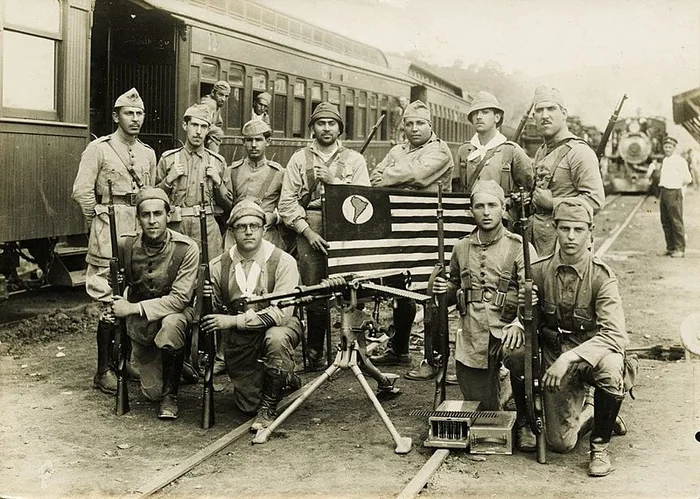
Soldiers of the armored train number 4 during the constitutionalist revolution of 1932
Situation however was turbulent in the 1920s and 1930s. The new conservative government backed by the Army crushed a Constitutionalist Revolt in 1932 (also called the Paulista war) and prevented a communist and fascist (1935 and 1938) coup d’états. However a military dicatorship was in place by 1937. Brazil had a few tanks, of the French ww1 FT type, of which the purchase was arguably the work of Captain José Pessôa Cavalcanti de Albuquerque. He was also the officer in command of the 1st tanks company.
During the "Paulista War", the new conservative government backed by the Army, crushed a Constitutionalist Revolt in 1932 mostly led by the state of Minas Gerais intent to topple the government and dictate a new constitution. Brazil had few tanks, mostly French Renault FT vehicles. Their purchase was arguably the work of Captain José Pessôa Cavalcanti de Albuquerque. He was also the officer in command of the 1st Tank Company. Both sides also operated armoured trains.
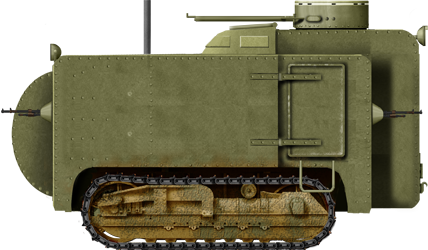
The armored flamethrower (Blindado Lança-chamas) made from a Caterpillar caterpillar tractor designed by Reinaldo Saldanha da Gama. Ot was one of the curiosities of the war. At least six different types or improvized armored types had been identified. The Loyalists operated moslty Renault FT Tanks
Brazil in WW2
By August 1942, after German and Italian submarines sunk many Brazilian merchant ships, the government formally declared war on the Axis, with popular support. The 25,000 strong Força Expedicionária Brasileira (FEB) was created to join the Allies. It was sent to the Italian front, led by general João Baptista Mascarenhas de Morais. It was fully equipped by the US Army although the bulk of the forces consisted of infantry. Some organic tank batallions had M4 Shermans and M3 Stuarts though.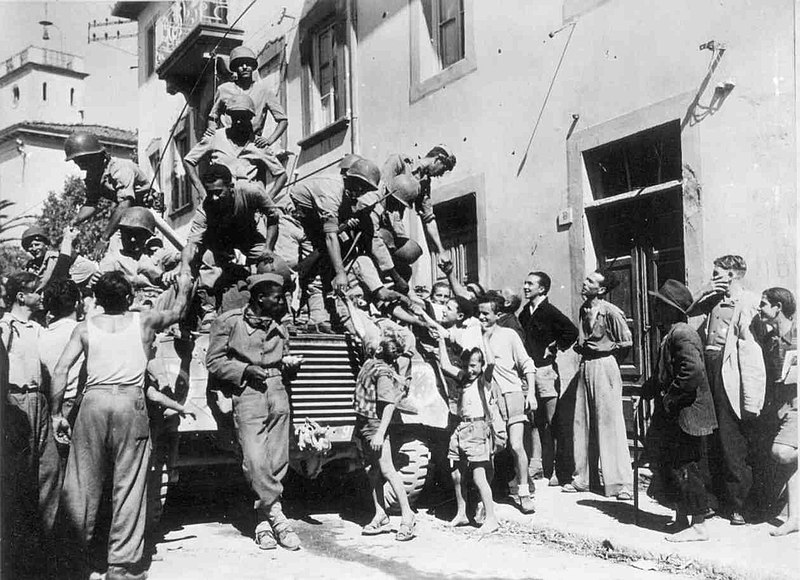
The BEF liberating the Italian city of Massarosa during the spring 1945 offensive.
Links
Cutia and the first Brazilian tanks (PDF)Defesa net, a Brazilian military portal
Tanks and AFVs of the Brazilian Army
Renault FT
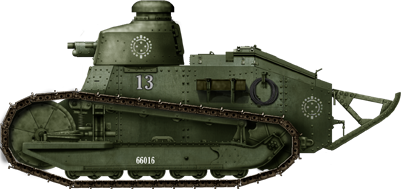
The first 12 Brazilian “carros de asalto” were Renault FTs acquired in 1921. They saw action during the 1924 rebellion and the 1932 revolution, and remained in service until the 1950s (for training). Apart these, the Paulista war also saw several improvized armoured vehicles used on both sides.
M3 Stuart
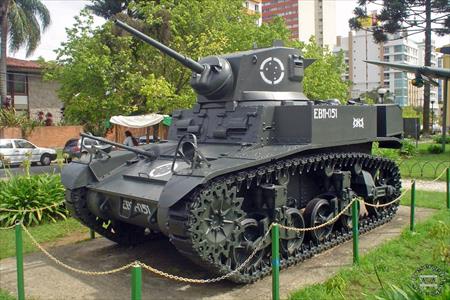
The M3 Stuart Light Tanks were in service with the BEF throughout Italy and until the surrender of the Axis. Shipped backed to Brazil, they were kept in service until the 1970s, when they were partly modernized by the Bernardini company.
M4 Sherman
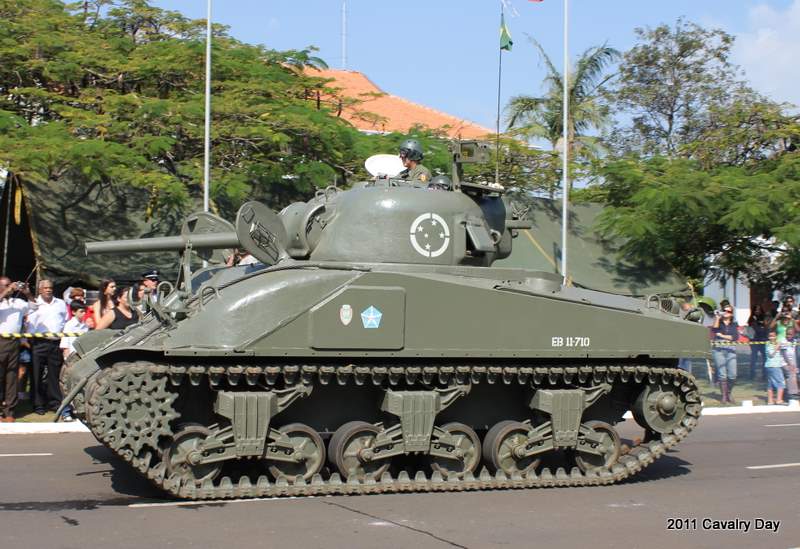
M41 Walker Bulldog
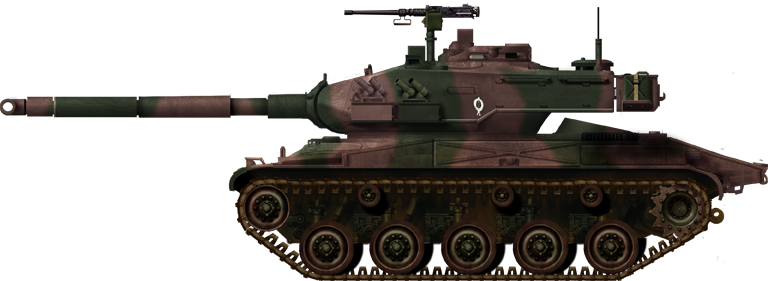
Bernardini X1A2
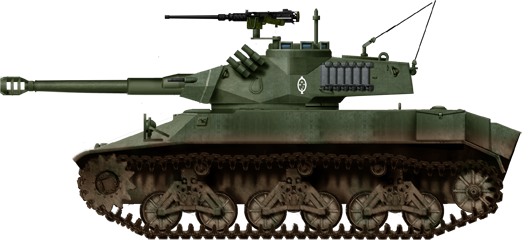
The Bernardini X1A2 was the last of a series of quite radical modifications made to the M3 Stuarts used by the Brazilian army. The Brazilian Bernardini X1A2 was the last of a series of quite radical modifications made to the M3 Stuarts used by the Brazilian army. 30 were produced/converted in the early ’80s and they were practically all-new vehicles.
Prototypes
Bernardini MB-3 Tamoyo

The Bernardini MB-3 Tamoyo was the most ambitious project of the Bernardini company, unveiled in 1983. It was based on the M41 Walker Bulldog and the program was initially named “X-30”. In 1978, the first prototype was rolled out, still fitted with the 76 mm (3 in) M32 rifled gun. Bernardini also tested its own 76 mm (3 in) M32 BR-3 gun. Another prototype featured Bernardini’s 40 cal 90 mm (3.54 in) rifled gun (Tamoyo I/II), while the last variant, the Tamoyo III, featured a 52 cal. 105 mm (4.13 in) rifled gun. There were also new sights, a new Ferranti Falcon FCS, complete with sensors, a digital ballistics computer and a laser rangefinder. A layer of composite material modules was added on the original RHA hull. It was propelled by a brand new powerplant, the Saab-Scandia DSI-14 V8 diesel giving 500 hp or the 730 hp Detroit 8V-92TA. Despite all its promises, including interesting modernization contracts for all M41 operators, the project was abandoned and financially wrecked the company.
EE T1 Osorio

The EE T1 Osorio was a rather cheap MBT, at $3,840,261 USD apiece. At 42.9 short tons it was still relatively light but was armed with the 120 mm (4.72 in) GIAT G1 smoothbore gun (second prototype) or the 105 mm (4.13 in) L/52 L7 rifled gun (first prototype) and 2 cal.50 (12.7 mm) heavy MGs. It was protected by a potent combination of composite modules mixing aluminum/steel, carbon fibers, and ceramics. It was also fast at 26 hp/tonne, with a reliable German 12-cylinder MWM TBD 234 Diesel engine which gave 1,100 hp. This gave it a top speed of 70 km/h (43 mph) and 550 km range. Its hydropneumatic suspension was also a modern and effective solution. But generous hopes are often put in check by reality. The EE-T1 P1 was unveiled in 1985, followed by the P2 in 1986, both successful in tests, but no order ever came, and Engesa also went bankrupt.
Other models
- Charrua XMP-1 – tracked amphibious armored personnel carrier. Prototype built 1984.
- VBTP-MR
- EE-T4 Ogum – Light tracked reconnaissance vehicle.
- Astros II Multiple Rocket Launcher
- GUARÁ Avibrás 4×4 light armored car
- VBL (inbrafiltro) 4×4 light armored car
- AV-VU4 AM medium 4X4 armored car
- AV-VBL Heavy 4×4 armored car
- EE-17 Sucuri

Cold War Tanks


































Cold war tanks posters

Cold War Main Battle Tanks

Cold War Soviet Army
